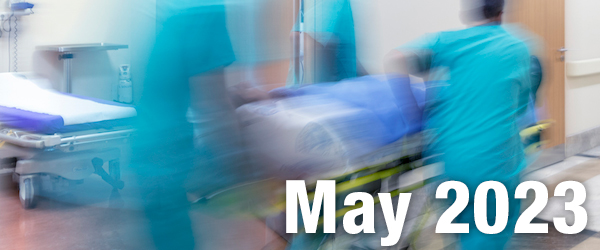In this guest editorial published in The Bulletin, Dr. Steve Gordon, president and CEO of St. Charles, reaffirms the health system’s commitment to reaching a contract agreement with the Oregon Nurses Association and shares his concern about a potential nurses’ strike.
Today, we received a notice from the ONA indicating plans to begin a strike of indefinite duration on June 12. While we will continue to bargain in good faith in sessions scheduled for next week, we want our patients and community to know that a strike will have significant impacts on the services we are able to provide.
At St. Charles Health System, caring for patients is the driving force behind everything we do. Our caregivers seek out this profession because they have a heart for service. That focus on putting patients first is what drew me to work in this organization and this region.
You may be aware that the statewide Oregon Nurses Association has been authorized to call a strike on behalf of the approximately 900 nurses who work at the St. Charles Bend hospital campus.
While we prefer to have conversations related to negotiations at the bargaining table and not in the press, we are at a point where we feel obligated to inform our community and patients about real concerns and possible limitations in health care services if we aren’t able to reach a resolution. We are seeking mediation and firmly believe a federal mediator could help us reach a full agreement – which would be the best possible outcome for our community.
St. Charles leaders are committed to bargaining respectfully and in good faith to reach a fair contract agreement that includes generous wage increases and that ultimately preserves jobs, advances nursing practice and strengthens services for the future.
In many ways, we agree with the fundamental issues ONA has identified in its yard signs and other advertising – recruit, retain and respect. Retaining and recruiting qualified health care professionals is an area we focus on every day. We are proud that our nurses are already among the highest paid in the state at an average wage of $108,000 a year, along with a generous benefits package.
St. Charles did not cause our nation’s severe shortage of health care professionals. And we are proud that, despite this shortage, we have successfully hired 118 new registered nurses to the Bend hospital in the past year. We have created innovative recruitment programs, like a Nurse Residency program that will hire 40 new RNs this summer. We are working to grow our own health care professionals of the future. Central Oregon’s quality of life and St. Charles’ reputation for excellence help our recruitment efforts. Lawn signs, personal attacks and negative advertising do not. A strike would be devastating.
Sadly, if the ONA walks away from negotiations, the impact will be felt throughout the region.
As a physician, I can tell you that I have a deep and profound respect for all people who choose careers in health care. Caring for others is often a special calling that can be incredibly rewarding, but also difficult and disheartening at times. Our entire staff has been through one crisis after another during the past three years. I see, hear and understand where our nurses are coming from and am heartbroken many feel disrespected. We are listening and learning from our caregivers to rebuild our culture after three years of strain, while still navigating our nation’s ever-present, convoluted system of health insurance and regulation. We want to come together again as one team and I greatly hope our nurses see the progress we are making. I hope the ONA will stay with us at the bargaining table until we can reach an agreement.
As the only Level II trauma facility east of the Cascades in Oregon, we believe a strike will essentially result in a public health emergency for multiple counties. While we will do our best to put contingency plans and staffing into place, we also need patients to be prepared for long wait times, cancelations of planned procedures and an increased need for medical transport to hospitals in Portland, Seattle and Boise. These reductions in service will be necessary in order for us to preserve our core ability to maintain emergency care that cannot be delayed.
We are asking for mediation. We are asking for open-minded, constructive conversation in contract negotiations. We are asking for the opportunity to continue our healing and to work toward positive solutions to complicated problems together.
Dr. Steve Gordon
President and CEO
St. Charles Health System


